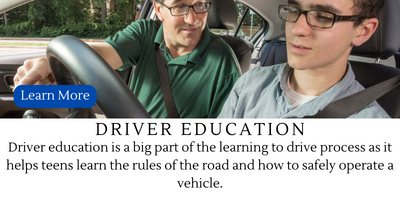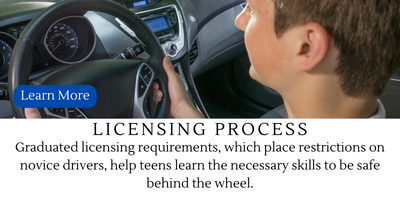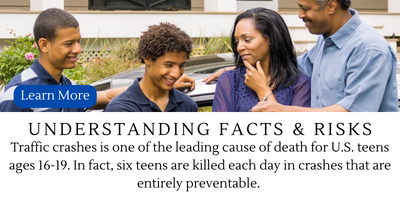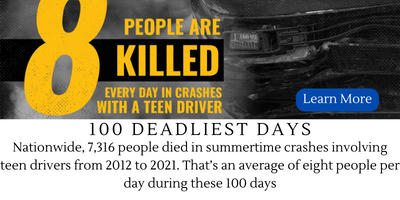Learning to drive can be stressful for teens and parents. Teenagers have the highest crash rate of all drivers on the road. Parents can ease their anxiety and protect their kids by getting actively involved in the learning process.
Talking frequently about driving safety, creating a driving agreement, practicing driving together and leading by example can make a huge difference in helping your teen drive safer—especially when you’re not in the car.
Here are some tips to help keep your teen driver safe.
1. Talk about driving safety early and often
Start by teaching your kids what kinds of driving behaviors are risky:
-
- Speeding: Discuss the importance of adhering to posted speed limits and knowing when to slow down for bad road or weather conditions.
- Distraction: A AAA study found that interacting with passengers and cell phones were the most frequent distractions for teen drivers.
- Driving under the influence of alcohol or drugs: Make sure your teen understands that impaired driving should never be an option.
- Poor visual scanning: Talk to your young driver about the importance of staying alert and constantly scanning the road for hazards.
2. Lay out the rules of the road
Research shows that teens report engaging in less risky behavior when there is a formal agreement to establish driving boundaries. Visit AAA.com for a sample agreement and other information to help parents and teens navigate the learning-to-drive process.
3. Prepare with practice
Plan to log at least 100 hours of driving practice with your teen before letting them drive solo. Expose them to different situations while driving together – night and day, freeways and gravel roads, sunny days and wet weather – to increase their experience.
4. Set a good example
Show your teen that you take driving as seriously as you expect them to. Avoid speeding and distractions. Always wear your seat belt. Obey traffic laws. Never drive impaired.
5. Insure your new driver
Talk with your agent about adjusting your policies:
-
- Consider increasing deductibles. A deductible is the portion you pay out of your own pocket if you have to file a claim. Higher deductibles generally equal lower premium costs.
- Check for discounts. Ask about discounts for good students or teens who complete safe driving courses. You may also be able to save money by combining your auto and homeowners policies with a single insurer.
- Choose safety over speed. When shopping for a car for your teen driver, avoid cars with high horsepower. Consider heavier vehicles with electronic stability control, which is mandatory for vehicles since the 2012 model year.






